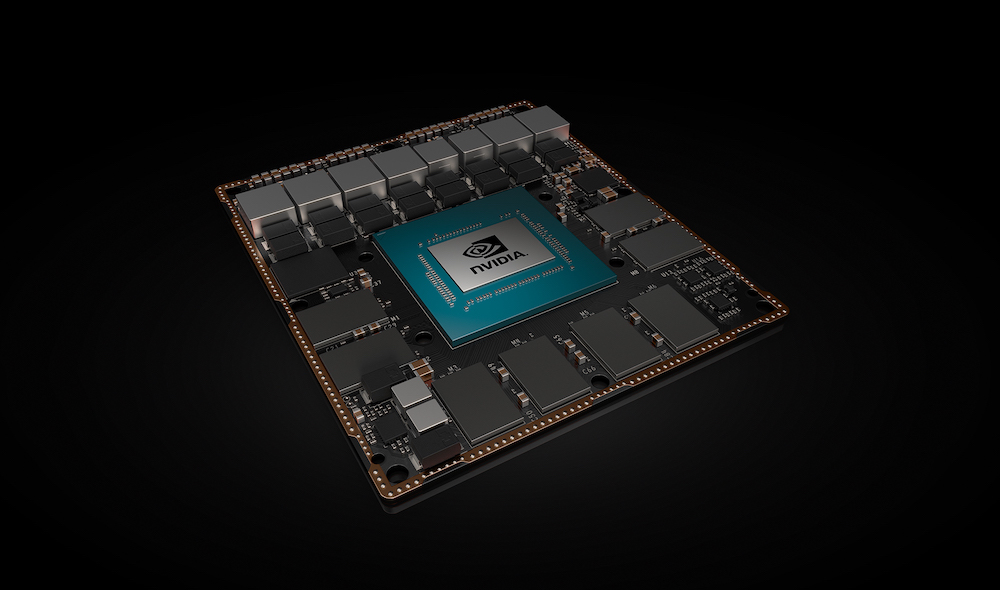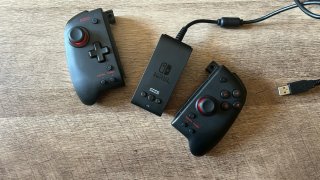This Tiny Chip Will Improve The Speed Of Autonomous Vehicles And AI Machines
Harin - Dec 15, 2018

- New ‘Deep Nostalgia’ AI Allow Users To Bring Old Photos To Life
- Pilots Passed Out Mid-Flight, AI Software Got The Aircraft Back Up Automatically
- YouTube AI Mistakes Black And White In Chess For Racism
Yesterday, NVIDIA, an American technology firm, announced that a new chip has been successfully developed for AI-powered robots and devices.
The tiny chip is marketed as the Jetson AGX Xavier Module which is said to be capable of empowering applications from driverless cars to autonomous drones, video analytics systems, and automated factory robots.
NVIDIA Jetson AGX Xavier Module
The chip is developed based on the Xavier SOC. It has six processing components, including a Carmel Arm64 CPU, a Nvidia Volta Tensor Core GPU, processors for video, vision, image as well as a deep learning accelerator. Jesse Clayton, an employee of Nvidia says that:

The most important thing is that although the chip can offer the processing power equal to that of a full workstation server, it only consumes 10W, making it absolutely suitable for autonomous devices and machines. The power this new chip can offer is approximately 10 times the efficiency and over 20 time the performance of older Jetson modules. And this chip is so small that it can fit into your palm.
The Jetson AGX Xavier also utilizes the AI platform of Nvidia which allows developing to equip their devices with analytics capability as well as machine learning.
According to Nvidia, the module has been receiving numerous praises from early users. For example, the Jetson AGX Xavier is a key component of UK-based Oxford Nanopore’s DNA sequencer.
A japan company, Denso, specializing in auto parts manufacturing, is also eyeing this chip to make their factories more secure. The company aims to equip all the automated machines in the factories with AI, to ensure human employees’ safety.
It is expected to see what the new Jetson AGX Xavier from Nvidia can do to the fields of autonomous and AI-enabled devices and machines in the future.
Featured Stories

ICT News - Apr 09, 2025
Experts Say Trump's Call for US-Made iPhones Could Triple Prices

ICT News - Apr 08, 2025
How Would US Tariff Affect Tech Prices in India?

ICT News - Feb 26, 2025
Elon Musk's Federal Workforce Overhaul: AI Takes the Helm

ICT News - Feb 26, 2025
Will AI Kill Coding Jobs? The Truth Might Surprise You

ICT News - Feb 25, 2025
Not Radiation: What Is Causing the Strange Genetic Evolution of Chernobyl’s Dogs?

ICT News - Feb 25, 2025
Google to Phase Out SMS-Based Authentication Codes

ICT News - May 17, 2022
3 Reasons your privacy gets compromised online

ICT News - May 11, 2022
Apple Devices For Sale

ICT News - Apr 12, 2022
Pin-Up Review India 2022

ICT News - Mar 29, 2022
Choosing between a shared and a dedicated server for gaming
Read more

Gadgets- Apr 10, 2025
Top 5 Best Accessories For The Nintendo Switch In 2025
The Nintendo Switch remains a gaming powerhouse in 2025, blending portable play with docked versatility like no other console.

ICT News- Apr 09, 2025
Experts Say Trump's Call for US-Made iPhones Could Triple Prices
Apple could face nearly triple production costs if forced to manufacture iPhones domestically, despite President Trump's confidence in American manufacturing capabilities.

Gadgets- Apr 09, 2025
Top 5 Best Budget Headphones to Buy in 2025
These headphones stand out because they give you a lot for less, pulling in features like noise canceling, app controls, or long battery life.


0 Comments
Sort by Newest | Popular